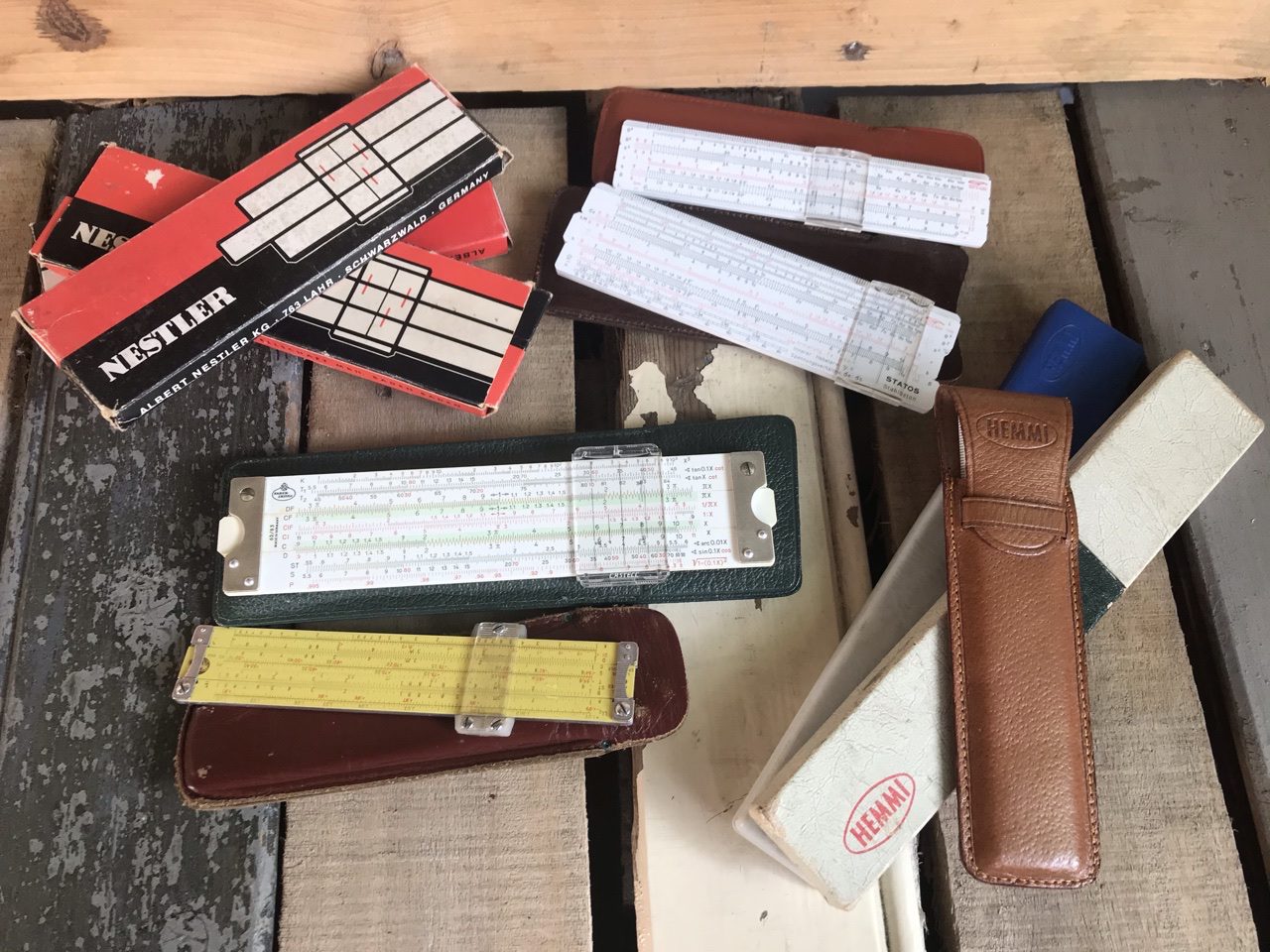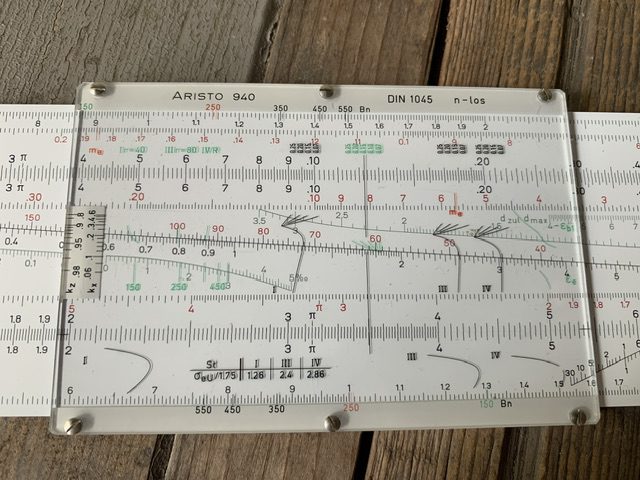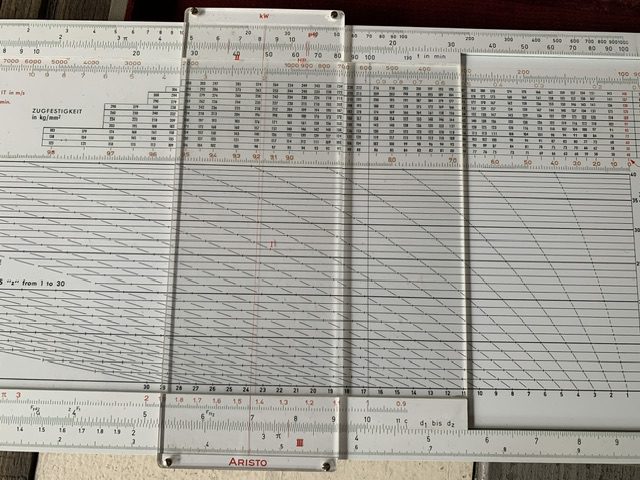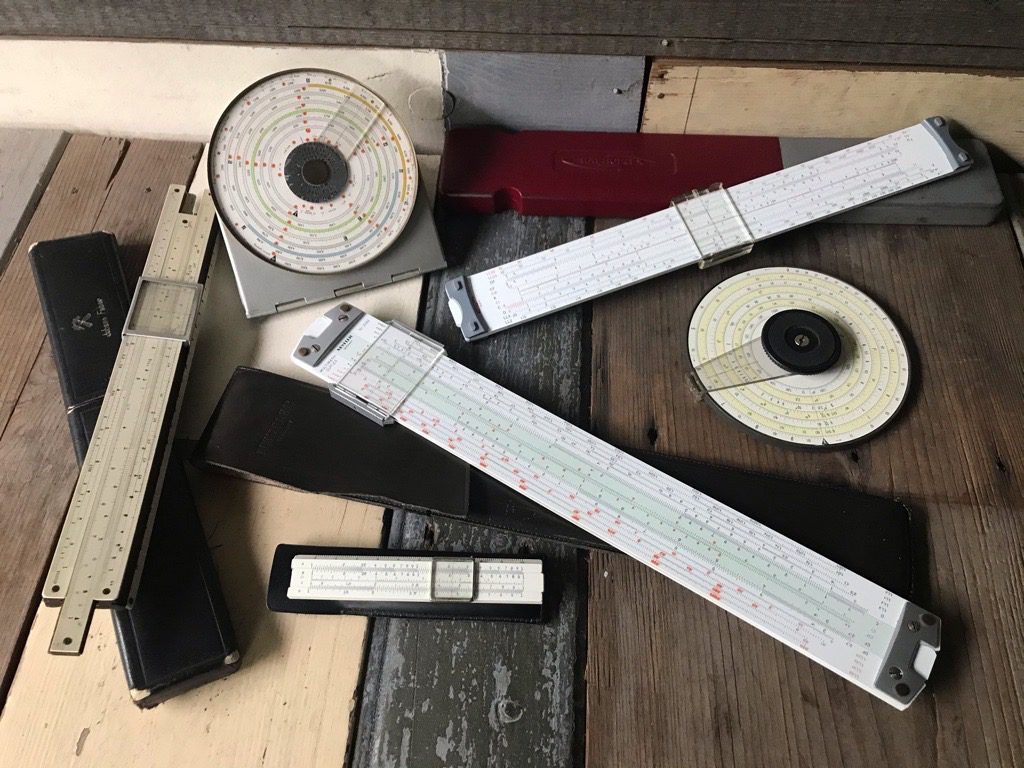Slide rules are a field of collecting in their own right, read the article Great vintage collection : slide rules, for general information on this calculation aid. In this article I will be looking into the smaller specimens, the pocket slide rules. Not the most common used regular sized ones, but the pocket sized versions between 6,5 – 15 cm or 2 1/2 – 6 inches.
Some history on this smaller slide rule
Every time something new gets invented, especially with technology, mankind is obsesses with making it better. Which often means….smaller. Which we can see in the transition from tech like mechanical watches from mantel piece to pocket to wrist size. In computes from room filling to handpalm size and in cars from carriage size to micro car. It seems since pockets were invented, mankind wanted to make stuff that fit in it.
The first sliding calculator aids were large. Larger was better. The longer the slide rule, the more calculation (additional scales) or more exact calculations (longer scales) could be made. Also on round version there was room for longer schales then on a straight slide rule. Not unexpectedly the first small circular slide rules looked like pocket watches, specially in size, ca. 6,5 cm or 2 1/2 inches in diameter as shown below.

The oldest one with chromium plated case was made by Molter from Germany around 1925. Even the materials used were the same as in pocket watches. The somewhat larger one is made by Aristo for simple and quick calculating of percentages. The one on top is made by ALRO from The Netherlands and is the smallest one I found. More information on this company and it’s slide rules can be found in the article : Great vintage collection: circular slide rules from Holland by ALRO.

pocket slide rules
Most users also seem to have favored the straight slide rule. These were also often the ones used in classrooms so this shape is what most people got acquainted with as kids. Probably the reason why straight slide rules outnumber their round counterpart. The above picture shows slide rules from various brands like Nestler and Faber-Castell from Germany, Graphoplex from France and Sun Hemmi from Japan and the yellow Pickett from the USA. Yet Aristo from Germany made the most variation, which will be looked at closer below.
Aristo pocket slide rules in many variations






